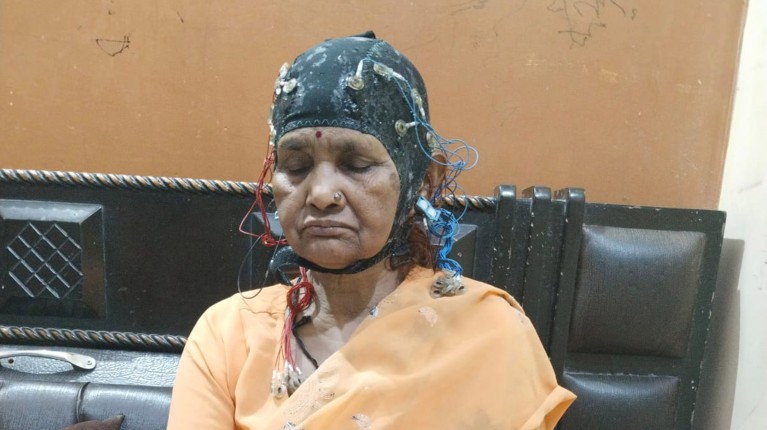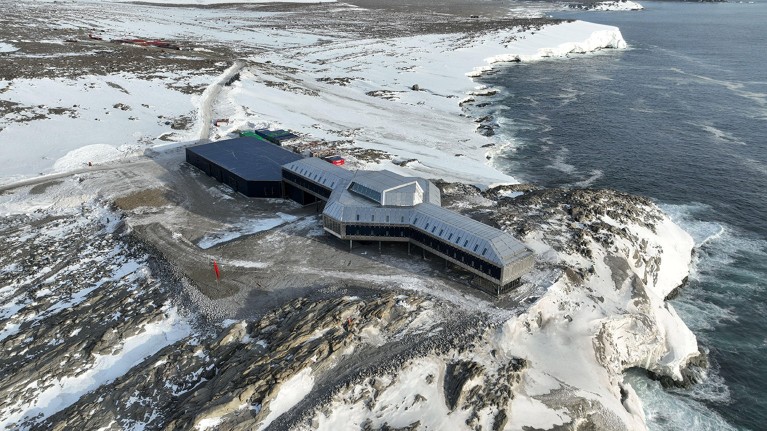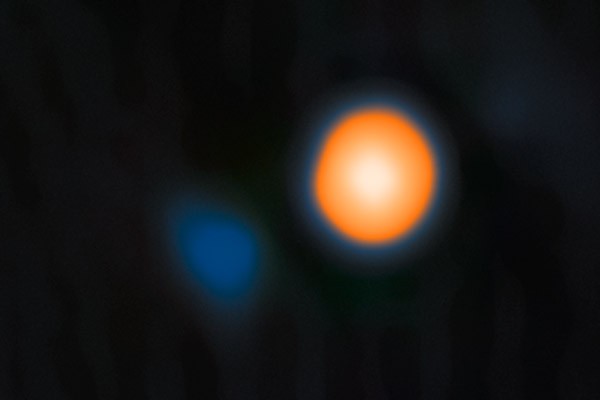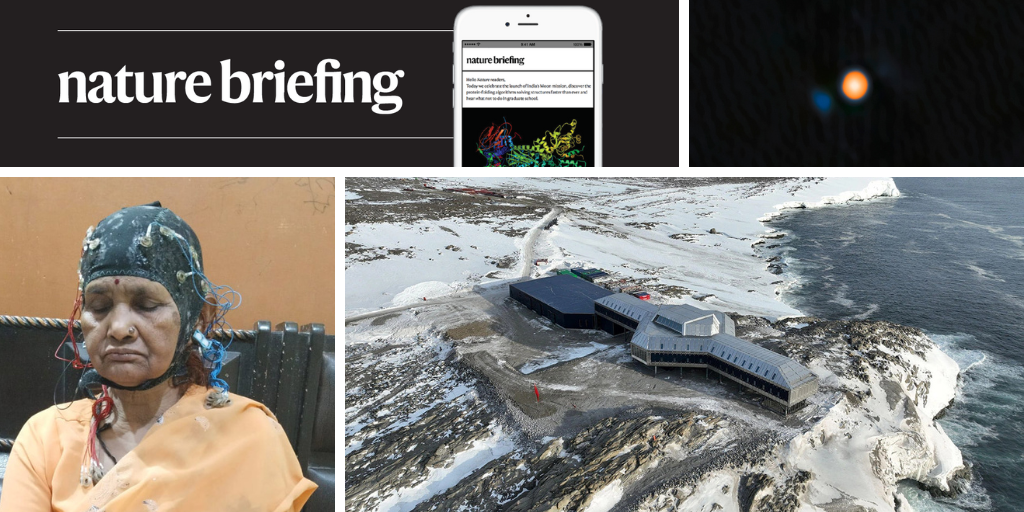You have full access to this article via your institution.
Hello Nature readers, would you like to get this Briefing in your inbox free every day? Sign up here.

Field researchers recorded brain activity from thousands of people in various settings in India and Tanzania.Credit: Sapien Labs Center for Human Brain and Mind
A group of citizen neuroscientists has collected brain-activity recordings from nearly 8,000 people across Tanzania and India. The team, trained by researchers to record brain activity using portable headsets, collected data from a wide range of people in settings such as schools and offices across both countries. The data matched the quality of recordings done in research labs and cost less than US$50 per participant. The approach could help to expand neuroscience studies in low- and middle-income countries — regions that have long been under-represented in human brain research.
Moving to a four-day work week, without a reduction in pay, leaves employees happier, healthier and higher-performing. Researchers found that, among almost 3,000 workers who took part in a six-month trial, the shorter week reduced burnout, increased job satisfaction and improved mental and physical health. The study didn’t analyse whether the reduced working pattern affected company-wide productivity, but more than 90% of companies that took part decided to stick with it after the trial period, which suggests they weren’t worried about a drop in profits, notes sociologist and study co-author Wen Fan.
Reference: Nature Human Behaviour paper
A kind of dental floss can act as a needle-free flu vaccine in mice. The floss delivered proteins and inactive flu viruses to the mice’s gumlines, triggering an immune response that protected against the disease. Mice that had been flossed three times — a task researchers note was no mean feat — all survived infection with the active virus four weeks after their last dose. Mice that hadn’t been vaccinated died from the virus. When human volunteers used dental picks coated in food dye, researchers found that about 60% of the dye transferred to the participants’ gums, which suggests a floss-based vaccine could work in people.
Reference: Nature Bioengineering paper
As the administration of US President Donald Trump prepares to slash funding for polar research, China’s increasing interest in Antarctica is giving scientists hope that research of global importance will continue on the continent. The country’s fifth Antarctic station, Qinling, opened last year and will run studies into marine and terrestrial ecology, sea ice and geophysics, among other topics. Much of Qinling’s global significance will depend on how China shares its data.

China’s fifth Antarctic station, Qinling, opened last year. Credit: Zhu He/Xinhua/Alamy
Features & opinion
A restaurant in Lviv, Ukraine, known in the 1930s as the Scottish Cafe served as a cradle for mathematical discovery, writes author Patrick Maynard. Amidst music and chatter, figures including Stanisław Ulam, Stefan Banach and Hugo Steinhaus wrote calculations in pencil on the marble tabletops and vied to win prizes — including once, a live goose — for solving conundrums. In the words of writer and health scholar Chris Zielinski, it was “the centre of [Lviv’s] — and for a while the world’s — mathematical universe”.
Scientists who began their doctoral studies in 2020 found their feet during a global pandemic and are graduating into an uncertain future that is influenced, even outside the United States, by disruptions to US science. “It’s difficult to plan around all the chaos,” says US neuroscience postdoc Rachel Gatlin. An anonymous fifth-year PhD student in Israel says they’re “terrified” by troubles at home and abroad. “Relocating to the United States used to be our safety net, and now it’s this super scary thing.” In Canada, phycologist Khashiff Miranda sees an opportunity for the country to take a lead in Arctic research and international collaboration. “If nothing else, I think right now is the moment of change.”
Image of the week

Astronomers estimate the companion star to be nearly 20 times less massive and a million times fainter than Betelgeuse, “effectively hiding it in plain sight near one of the best-studied stars in the night sky”.(International Gemini Observatory/NOIRLab/NSF/AURA Image Processing: M. Zamani (NSF NOIRLab))
This dim blue smudge next to the bright orange of Betelgeuse is the iconic star’s stellar companion. Betelgeuse’s brightness varies roughly every six years, leading astronomers to guess that it was being blocked by a dimmer partner in an incredibly tight orbit. But “papers that predicted Betelgeuse’s companion believed that no one would likely ever be able to image it”, says space scientist Steve Howell. Now the smaller star has been detected for the first time using ‘speckle imaging’ by the Gemini North telescope in Hawaii, which uses short exposure times to remove the distortions in images caused by Earth’s atmosphere.
Reference: The Astrophysical Journal paper
What would you do with a spare US$5.3 million? For one anonymous buyer, the answer is: a really cool rock. The largest Martian meteorite recently sold at auction in New York. But buyer beware: the government of Niger has already launched an investigation into whether the 25kg meteorite was taken from the country with proper authorization.
While I ponder the ethics of putting scientifically important items on the auction block, why not send me your feedback on this newsletter? Your e-mails are always welcome at [email protected]
Thanks for reading,
Flora Graham, senior editor, Nature Briefing
With contributions by Jacob Smith
• Nature Briefing: Careers — insights, advice and award-winning journalism to help you optimize your working life
• Nature Briefing: Microbiology — the most abundant living entities on our planet — microorganisms — and the role they play in health, the environment and food systems
• Nature Briefing: Anthropocene — climate change, biodiversity, sustainability and geoengineering
• Nature Briefing: AI & Robotics — 100% written by humans, of course
• Nature Briefing: Cancer — a weekly newsletter written with cancer researchers in mind
• Nature Briefing: Translational Research — covers biotechnology, drug discovery and pharma


